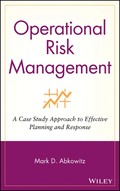News that Transocean are awarding their executives substantial safety bonuses has the internet aflame with outrage. Certainly it seems hard to justify the bonuses given after the death of 11 workers and the damage to the local environment, economy and community but the action will also affect safety management.
Safety management is increasingly relying on statistics to identify performance levels. Transocean’s actions illustrate that some statistics bear little relation to reality or, at least, the real-world context of its operations.
AFP quotes Transocean as reporting to the US Securities and Exchange Commission that:
“Notwithstanding the tragic loss of life in the Gulf of Mexico, we achieved an exemplary statistical safety record as measured by our total recordable incident rate and total potential severity rate” Continue reading “Transocean executives gain safety bonuses”



